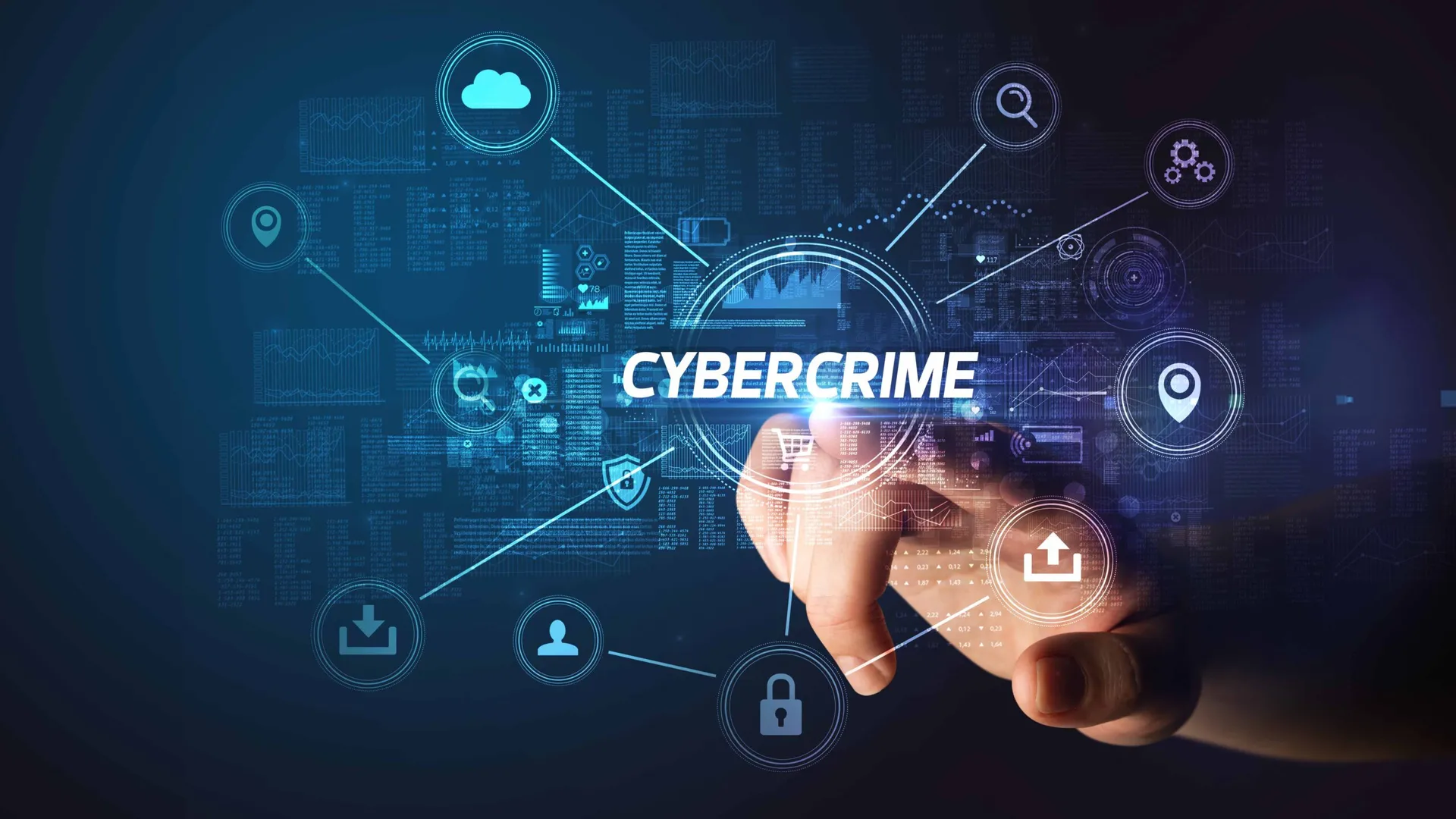Introduction
In a world where technology is integral to our everyday lives, the rise of cybercrime has become an increasing concern. As we become more reliant on the internet for work, communication, and commerce, cybercriminals have adapted, using sophisticated methods to exploit digital vulnerabilities. Whether it’s stealing sensitive personal data, hacking corporate systems, or conducting large-scale fraud, the threat of cybercrime is real and growing.
This article will explore what cybercrime is, examine its different forms, and provide actionable steps to protect yourself and your digital assets. Whether you’re an individual user or a business owner, understanding cybercrime and learning how to defend against it is essential in today’s digital landscape.
What is Cybercrime?
Cybercrime refers to any illegal activity carried out using computers, networks, or digital devices. It encompasses a wide range of malicious actions that aim to harm individuals, businesses, or governments by exploiting the vulnerabilities of online systems. Cybercrime can occur at any time, affecting people worldwide and leaving lasting financial, emotional, and operational damage.
Cybercriminals operate across borders, making it difficult for law enforcement to trace them. They use advanced technology to steal information, disrupt services, and engage in fraud. The ever-evolving nature of cybercrime makes it critical for everyone to understand the risks and take appropriate precautions.
Types of Cybercrime
Cybercrime is a broad term that includes numerous illegal activities, all of which can have devastating consequences. Let’s look at some of the most common types of cybercrime that affect individuals and organizations alike:
1. Hacking
Hacking involves unauthorized access to a computer or network, typically to steal information or cause harm. Hackers may infiltrate systems to obtain financial data, intellectual property, or other sensitive information. They often exploit security flaws or weak passwords to gain entry.
2. Phishing
Phishing attacks trick people into revealing confidential information, such as usernames, passwords, or credit card numbers. Cybercriminals often pose as legitimate companies or trusted individuals in fake emails or websites, luring victims into providing their data. Phishing remains one of the most prevalent and successful forms of cybercrime.
3. Ransomware
Ransomware is a type of malicious software that encrypts a victim’s data, rendering it inaccessible until a ransom is paid. Once cybercriminals gain access to a system, they demand money in exchange for restoring the data. Ransomware attacks can cripple businesses, governments, and individuals by locking up critical information.
4. Identity Theft
Identity theft occurs when a cybercriminal obtains and uses someone else’s personal information to commit fraud, often leading to severe financial losses. Stolen data, such as Social Security numbers, bank account details, or credit card information, can be used to make unauthorized purchases, open accounts, or obtain loans.
5. Data Breaches
Data breaches involve unauthorized access to confidential data held by companies or organizations. Hackers may steal sensitive customer or employee information, leading to significant financial and reputational damage. These breaches can expose personal details, financial records, and even health information.
6. Cyberbullying and Harassment
Cyberbullying involves using digital communication tools, such as social media or text messages, to harass, threaten, or intimidate someone. This form of cybercrime can have devastating effects, especially on young people, leading to emotional distress, anxiety, and in severe cases, suicide.
7. Online Fraud
Online fraud encompasses a variety of deceptive practices carried out over the internet, including investment scams, auction fraud, and fake charity donations. Cybercriminals often target unsuspecting victims by manipulating them into transferring money or providing valuable personal data.
The Impact of Cybercrime
The consequences of cybercrime are far-reaching and can affect individuals, companies, and even entire governments. Whether the loss is financial, emotional, or operational, the aftermath of cybercrime can be severe and long-lasting.
Financial Loss
One of the most immediate impacts of cybercrime is financial loss. Individuals may face fraudulent charges or unauthorized withdrawals, while businesses can experience disruptions in revenue and increased costs associated with restoring systems or paying ransoms. Cybercrime costs the global economy billions of dollars annually.
Reputational Damage
For businesses, a cyberattack can significantly damage their reputation. A breach of customer data can lead to a loss of trust, which is difficult to recover. In today’s digital economy, where customer trust is paramount, a company’s reputation can be irreparably harmed by cybercrime.
Loss of Personal Privacy
Individuals who fall victim to identity theft or phishing scams may experience a severe invasion of privacy. Personal information, including financial data, health records, or private communications, can be exposed or sold on the dark web. The emotional toll of such breaches can be overwhelming.
Disruption of Services
Cyberattacks can disrupt critical infrastructure, affecting everything from healthcare to financial services. Distributed denial-of-service (DDoS) attacks, for instance, can shut down websites and services, causing widespread chaos and preventing users from accessing vital systems.
Ways to Prevent Cybercrime
While the internet poses numerous threats, taking proactive steps can significantly reduce your risk of falling victim to cybercrime. Here are some key measures to protect yourself and your digital assets:
1. Use Strong and Unique Passwords
One of the simplest yet most effective ways to safeguard your accounts is by using strong, unique passwords. Passwords should be at least 12 characters long and include a mix of uppercase letters, lowercase letters, numbers, and special symbols. Avoid using easily guessed information like birthdays or names, and never reuse passwords across different accounts.
2. Enable Two-Factor Authentication (2FA)
Two-factor authentication adds an extra layer of security to your accounts. When you enable 2FA, you must provide a second form of identification (such as a code sent to your phone) in addition to your password. This makes it much harder for cybercriminals to access your accounts, even if they have your password.
3. Be Cautious of Phishing Attempts
Cybercriminals frequently use phishing emails and websites to steal information. Always be cautious when clicking on links or downloading attachments, especially if the email is from an unknown sender. Legitimate companies will never ask for sensitive information via email, so always verify the source before providing personal data.
4. Keep Your Software Updated
Regularly updating your software and operating systems ensures that you have the latest security patches to protect against known vulnerabilities. Outdated software is one of the most common ways cybercriminals exploit systems, so enabling automatic updates is a good practice.
5. Install Security Software
Using a reliable antivirus and anti-malware program can help detect and remove threats before they cause harm. Security software can block malicious websites, prevent unauthorized downloads, and protect your devices from various forms of malware. Regularly scan your computer for potential threats.
6. Backup Your Data
Regularly backing up your data ensures that you won’t lose important information in the event of a cyberattack, system failure, or data breach. Store backups on an external hard drive or in a secure cloud storage service that uses encryption to protect your files.
7. Secure Your Home Network
Ensure your home Wi-Fi network is protected by using strong passwords and encryption methods like WPA3. Avoid using public Wi-Fi for sensitive activities such as online banking, and consider using a virtual private network (VPN) to encrypt your internet traffic when using unsecured networks.
8. Monitor Financial Transactions
Regularly reviewing your bank and credit card statements can help you catch unauthorized transactions early. If you notice any suspicious activity, report it immediately to your financial institution and take steps to secure your accounts.
9. Limit the Personal Information You Share Online
Be mindful of the information you share on social media and other online platforms. Cybercriminals can use publicly available information to answer security questions, guess passwords, or even steal your identity. Adjust your privacy settings and be cautious about what you post online.
The Future of Cybersecurity
As cybercrime becomes more sophisticated, so too must our approach to cybersecurity. Several emerging technologies and strategies offer hope in the fight against cyber threats:
1. Artificial Intelligence (AI) in Cybersecurity
AI is becoming increasingly important in detecting and preventing cyberattacks. By analyzing patterns of behavior and recognizing anomalies, AI can help identify threats in real-time and respond more quickly than human operators.
2. Blockchain for Data Security
Blockchain technology offers a decentralized, transparent way to store data securely. Its use in cybersecurity is growing, particularly in areas like identity management and secure transactions. Blockchain’s immutable nature makes it difficult for cybercriminals to alter or tamper with data.
3. Cybersecurity Regulations
Governments around the world are introducing stricter regulations to improve cybersecurity. These laws require businesses to protect customer data, report breaches, and implement adequate security measures. Staying informed about compliance requirements can help businesses avoid legal penalties while keeping their systems secure.
Conclusion: Take Control of Your Online Security
As cybercrime continues to evolve, staying proactive in your online security measures is essential. While it may not be possible to eliminate the risk of cybercrime entirely, following best practices and using advanced security tools can greatly reduce your chances of falling victim to online threats.
Whether you’re an individual concerned about protecting your personal data or a business seeking to safeguard sensitive information, adopting the strategies outlined above can help keep you safe in the digital age.




